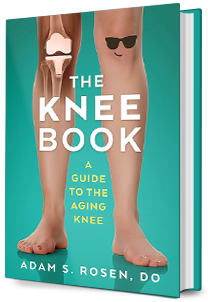Revision Knee Replacement
Total knee replacements occasionally need to be revised or redone. This may be due to fractures, infections, instability, stiffness or wear.
When fractures occur around a knee replacement they can be fixed. If the implant is stable the femur (thigh bone) or tibia (shin bone) can be fixed with plates and screws or a rod depending on the type and location of the fracture. If the knee replacement parts have been destabilized by the injury they will have to be revised.
Infections can occur early after the surgery or many years after the initial operation. If an infection occurs you will need one or more surgeries and a course of intravenous antibiotics.
Knees can develop laxity over time or after a fall or trauma. A revision can address the instability and may relief symptoms. Occasionally this can be addressed with changing the plastic insert or bearing. At times all of the parts may need to be revised.
Some knees develop significant stiffness after surgery. If an aggressive physical therapy program and a manipulation under anesthesia have not helped some patients have a revision. The goal of the surgery is to remove scar tissue within the knee to improve range of motion.
All knee revisions are big surgeries. The surgery is usually longer than a routine knee replacement and the recovery may be longer. Complications can occur including infections, blood clots, stiffness, leg length discrepancy, pain, injury to nerves or vessels, fracture, dislocations, bleeding and/or the need for transfusions or the need for additional surgery.






